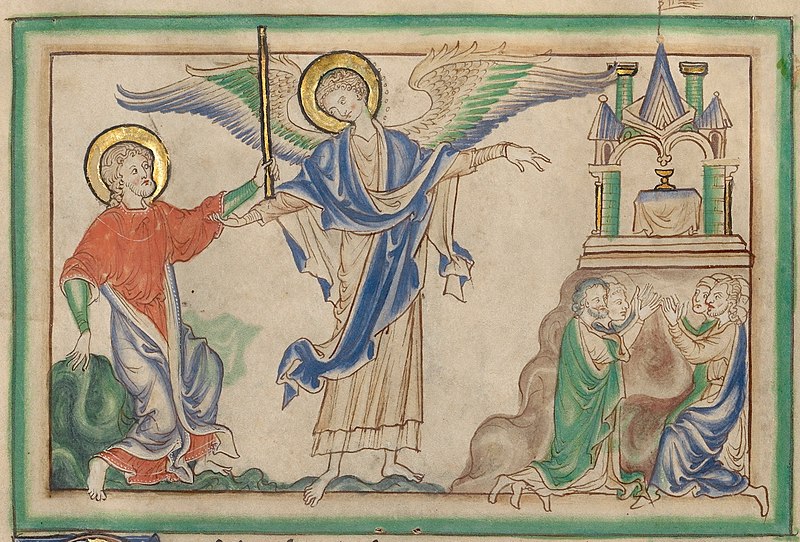
From Wikimedia Commons
I have been attempting to share with interested English speaking readers the German language publications of Professor Thomas Witulski’s thesis that the book of Revelation was most probably written in the early 130s, the time of emperor Hadrian.
The first series surveyed the reasons for identifying the two beasts of revelation, the one from the sea and the other from the land, with Hadrian and his propagandist Polemon. We saw the case for interpreting Hadrian as a Nero redivivus and the relevance of the number 666. The same series took an overview of how Hadrian’s program of an intensified focus on emperor worship in Asia Minor along with his own unprecedented identification with Zeus himself, and the requirement of all homes to contain shrines to the emperor, explained the situations facing the seven churches addressed in the opening chapters of Revelation. (I may still add to this series with further discussion of the evidence for Hadrian’s impact on Asia Minor.)
The second series covered the four horsemen of the apocalypse and their relation to events preceding Hadrian: the two-stage conquests of Trajan; the bloodbath that covered much of the eastern Mediterranean as a result of the Jewish (probably messianic) uprisings; the effects of these rebellions on the food supply in Asia Minor; and the merciless suppression of those rebellions by the Romans.
This third series is based on a third book by Witulski, Apk 11 und der Bar Kokhba-Aufstand : eine zeitgeschichtliche Interpretation [= Rev 11 and the Bar Kokhba Uprising: a contemporary interpretation]. Those who read German are excused from reading these coming posts and turning instead to the book made available on archive.org.
One of the darkest parts of Revelation
Ulrich Müller wrote in his commentary:
Das 11. Kapitel gehört zu den dunkelsten Stücken der Offb. = Chapter 11 is one of the darkest parts of Rev. (Müller, 205)
André Feuillet wrote an article for New Testament Studies,
Le chapitre xi de l’Apocalypse est un des passages les plus discutés de ce livre, célèbre entre tous par son obscurité. = Chapter xi of the Apocalypse is one of the most discussed passages of this book, famous among all for its obscurity. (Feuillet, 183)
Pierre Prigent in his commentary:
The majority of commentators start their explanation of Rev 11 by admitting they encounter in this passage (and in chapt. 12) the greatest difficulties in the entire book. (Prigent, 337)
If hitherto the passage has been so dark, Witulski asks:
Can the text of Rev 11:1f, 3-13 . . . possibly be illuminated in a new and hitherto completely unknown way by dating of the writing of Rev to the time of Emperor Hadrian? (Witulski, 1 – translation)
Go and measure the temple
Since Julius Wellhausen (Analyse der Offenbarung Johannis — how can a 1907 book not be available online!*) many interpreters of Revelation 11 have agreed that the prophecy should be read as set in the last days of the Jewish War that culminated in the destruction of Jerusalem and its temple in 70 CE. The prophecy was penned by a zealous Jew who had hoped that though the Roman armies were besieging Jerusalem there was still an expectation that God would intervene and protect the inner sanctuary of his temple. (Wellhausen pointed out that the passage has no characteristics of a Christian or Christ-related proclamation.) After all, do we not read in the account of Josephus that many Jewish defenders clung to the belief that divine deliverance was sure and imminent: Continue reading “Measuring the Temple in Revelation 11 – the Questions Arising”
